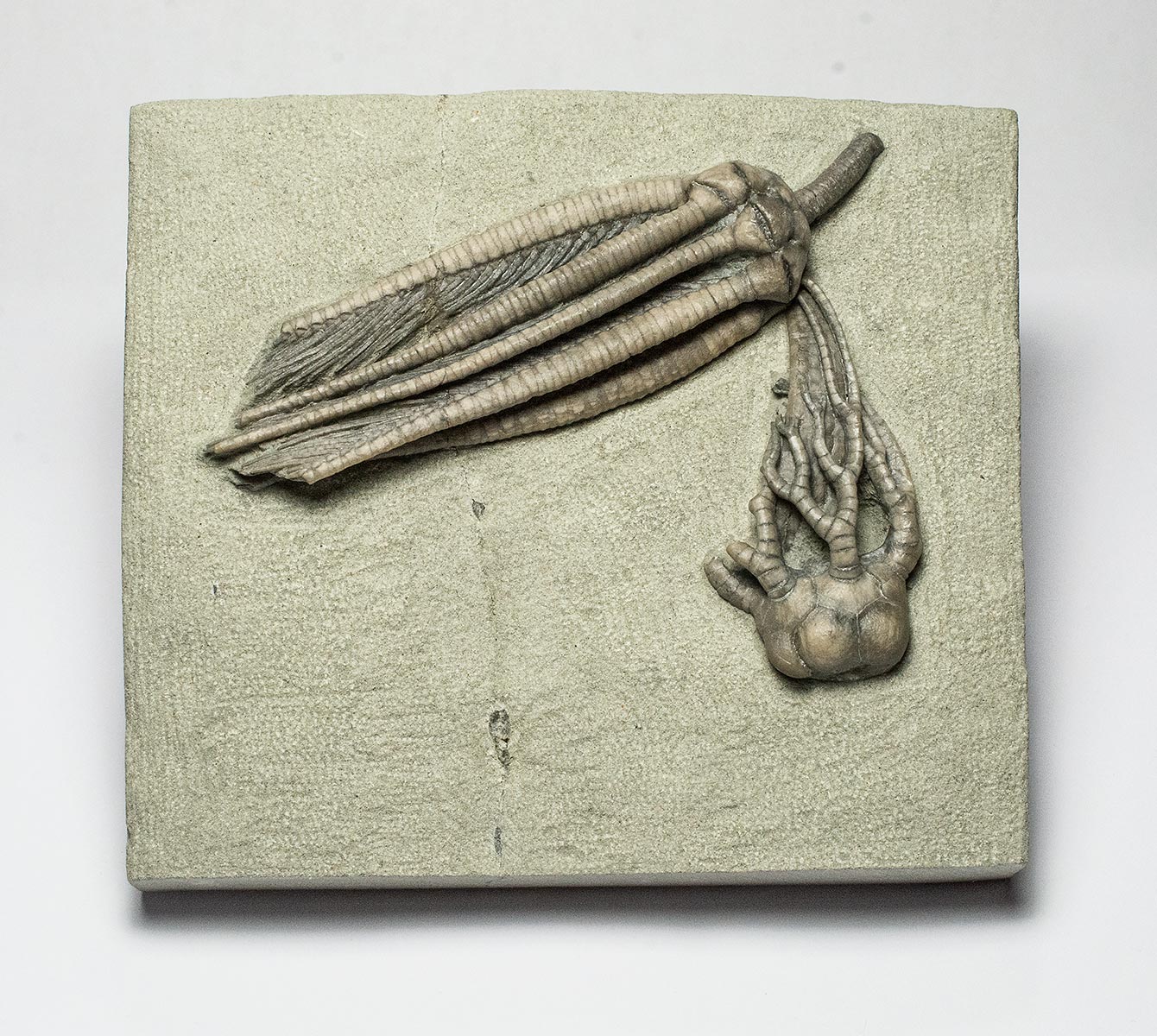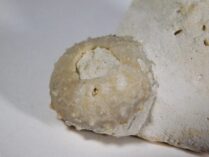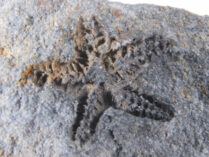Description
Parascytalocrinus validus and Cyathocrinus iowaensis
Mississippian (Visean)
Edwardsville Formation
Montgomery County, Iowa, USA
96mm slab with two excellent crinoids. Professionally prepared. Rare.
The Edwardsville Formation is a geologic formation that is exposed in parts of the Midwestern United States, particularly in Illinois, Indiana, and Kentucky. It was deposited during the middle Mississippian period, approximately 330-325 million years ago. One of the notable features of the Edwardsville Formation is the abundance of fossilized crinoids, also known as sea lilies.
Crinoids are a group of marine animals that are related to starfish and sea urchins. They are characterized by a cup-shaped body, or calyx, that is supported by a stem made up of stacked plates, or columnals. The calyx contains the crinoid’s internal organs and is surrounded by feathery arms, or brachioles, that the crinoid used to filter food particles from the water.
In the Edwardsville Formation, crinoids are abundant and well-preserved, and are often found in large clusters or beds. The crinoids from the Edwardsville Formation are generally small to medium-sized, with calyxes that range from less than 1 cm to several centimeters in diameter. They are typically preserved as internal molds, which show the shape of the calyx and stem, but not the external surface features.
The presence of abundant crinoid fossils in the Edwardsville Formation provides important information about the ecology and paleoenvironment of this ancient marine ecosystem. Crinoids were likely an important component of the food web, and their abundance may reflect favorable conditions for filter-feeding organisms. Additionally, the preservation of these fossils can help geologists better understand the depositional environment and sedimentary history of the Edwardsville Formation.





